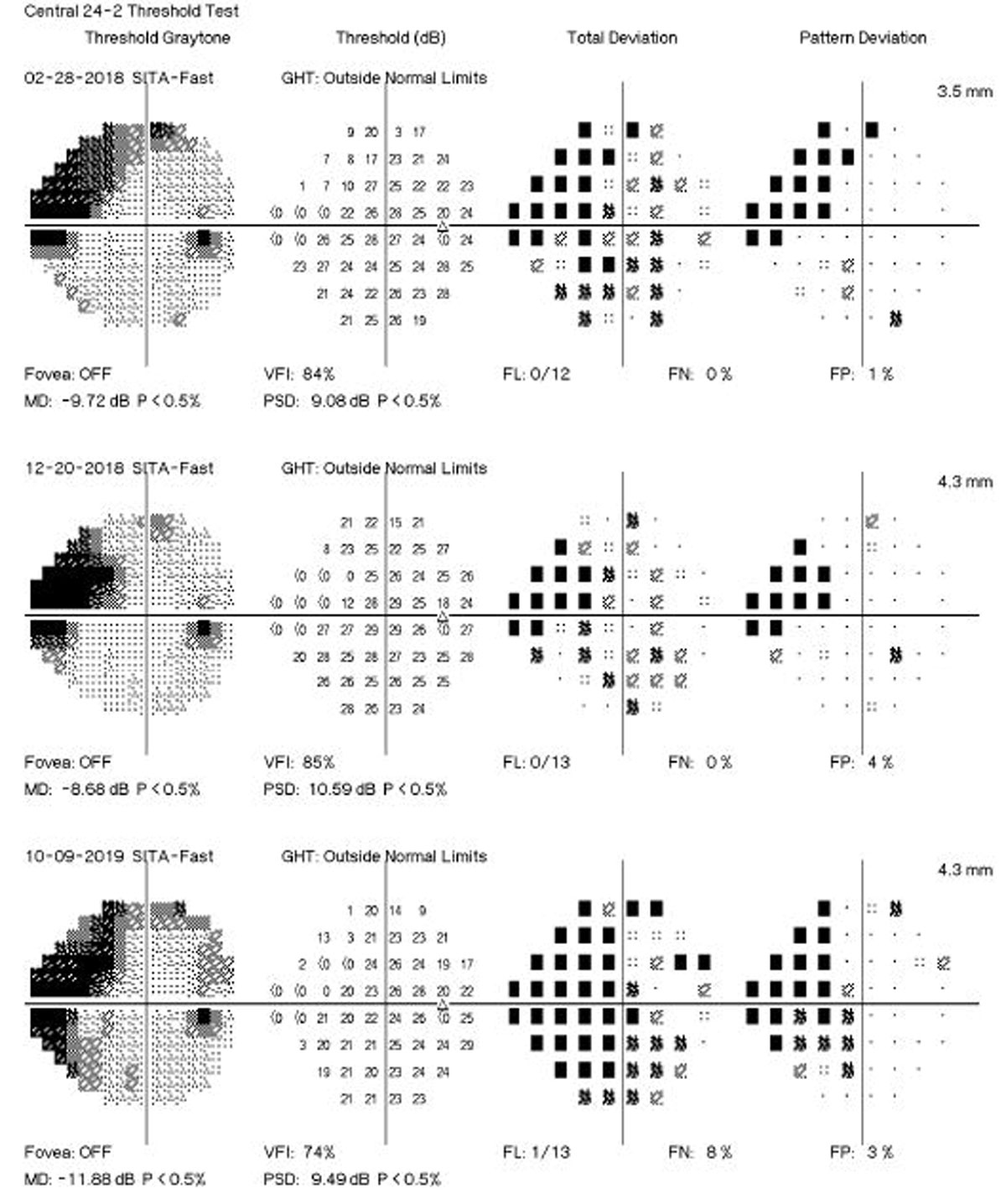 |
| Identifying optimal visual field testing frequencies can help reduce clinic burden. Photo: Brian D. Fisher, OD. Click image to enlarge. |
Catching visual field progression as early as possible can help patients retain more functional vision, but considering the burden that additional testing places on patients and clinics, it’s important to find the right testing frequency. Published this month in the Journal of Glaucoma, the first study to identify optimal testing frequency for detecting visual field progression in ocular hypertensive patients reported that once- and twice-yearly visual field testing is most ideal for most hypertensive patients.
The researchers analyzed 16,351 reliable 30-2 visual field tests from 1,575 eyes in the Ocular Hypertension Treatment Study (OHTS) observation arm. Using computer simulations (n=10,000 eyes) based on mean deviation values and residuals of risk groups, they estimated time to detect progression at testing intervals of four, six, 12 and 24 months (progression: -0.42dB/year). Time to detect a -3dB loss was considered an estimate for clinically meaningful perimetric loss.
At 80% power and -0.42dB/year progression, they found that the best tradeoffs to detect clinically meaningful significant changes in visual field loss were six-month intervals for high-risk patients, six-month intervals for medium-risk patients and 12-month intervals for low-risk patients.
The researchers emphasized in their paper that rapidly progressing ocular hypertensive patients should be monitored and tested more frequently to catch potential conversion to glaucoma. The testing interval used in the OHTS was six months, considered optimal by the present study whose investigators pointed out that clinical trial conditions and resources rarely align with real-world situations, where frequent visual field testing is often challenging.
“In light of the OHTS findings regarding risk calculation,” they wrote in their paper, “clinicians can now customize the frequency of testing for each patient once the baseline risk variables are collected. This may ultimately reduce costs to patients and the healthcare systems as well as minimize risks associated with unnecessary office visits.”
“Since previous findings have presumed no clear benefit from intense monitoring of ocular hypertensive patients, a combination of visual field tests and structural analyses may enable further spacing of those intervals,” the authors concluded. “Furthermore, our results may help reduce the burden of frequent office visits, particularly in low-risk patients.”
Melchior B, De Moraes CG, Paula JS, et al. What is the optimal frequency of visual field testing to detect rapid progression among hypertensive eyes? J Glaucoma. June 21, 2023. [Epub ahead of print]. |

